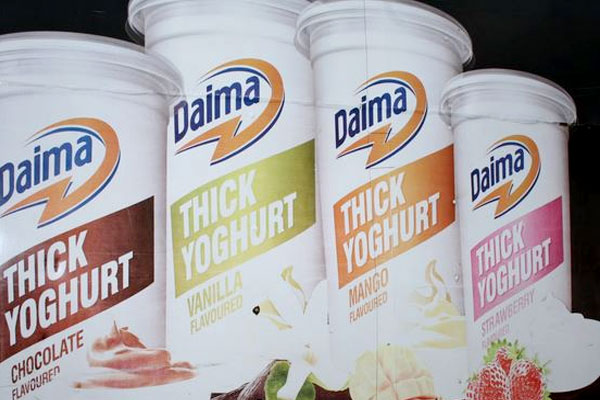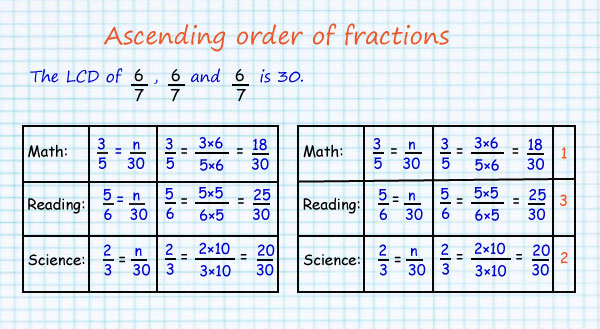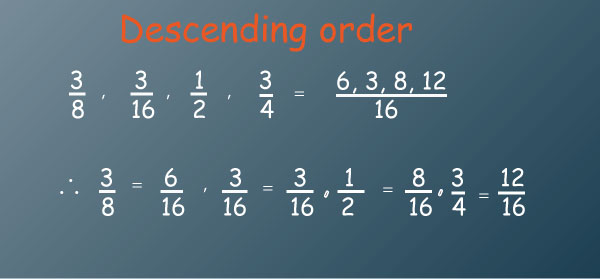Just like whole numbers fractions can be arranged in order of magnitude i.e from smallest to largest or from largest to smallest.
This is also called increasing order. It is arranging fractions starting with the smallest to the largest for example

A 800 ml cup of yoghurt was served to each of three children. Ndinda drank 700 ml of yoghurt. Her sister Wakonyo drank 300 ml, and her brother Kiminza drank 500 ml.
What part of the cup did each child drink?
| Yoghurt drank | fraction | |
| Ndinda | 700ml | 7/8 |
| Wakonyo | 300ml | 3/8 |
| Kiminza | 500ml | 5/8 |
Who drank the smallest part of the cup?
Answer: Wakonyo
Who drank the largest part of the cup?
Answer: Ndinda
Who fell in the middle?
Answer: Kiminza
Write the part of the cup that each child drank as a fraction, and then order them from least to greatest.
Solution is : 3/5, 5/8, 7/8

Note: To order fractions with like denominators, compare the numerators and consider them two at a time. It is a good idea to write a number in a circle next to each fraction to compare them more easily.
Examples
It takes Maneno three-fifths ( 3/5 ) of an hour to complete his math homework, five-sixths ( 5/6 ) of an hour to complete his reading homework, and two-thirds (2/3 ) of an hour to complete his science homework. Order the time spent to complete Maneno's homework by subject from least to greatest.
Because these fractions have unlike denominators we use the LCD (Least common Denominator) to convert them to equivalent fractions.
Compare two of the equivalent fractions at a time.

Answer: Ordering the time spent on Maneno's homework from least to greatest, we get: Math, Science and Reading.
Arrange the following fractions from the smallest to the largest "4/5, 4/4, 2/3"

Decreasing order is arranging fractions starting with the largest to the smallest.
For example;Arrange the following fractions in a descending order`3/8, 3/16,1/2,3/4`
Solution
(i) Identify the denominators: 8, 16, 2 and 4
(ii) Ascertain the LCM which is 16
(iii) Put the fractions under the same LCM as shown below.

after renaming the fractions we can arrange them in the descending order;